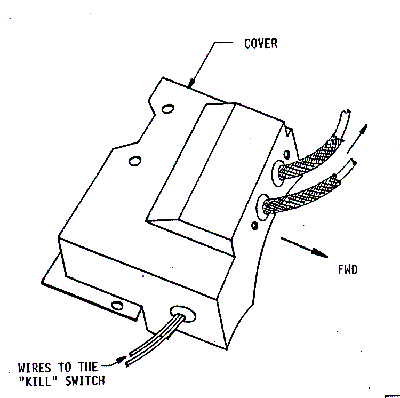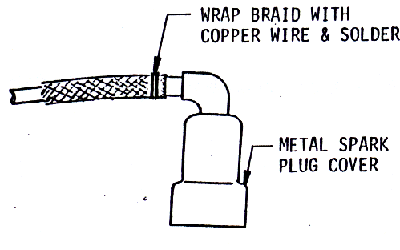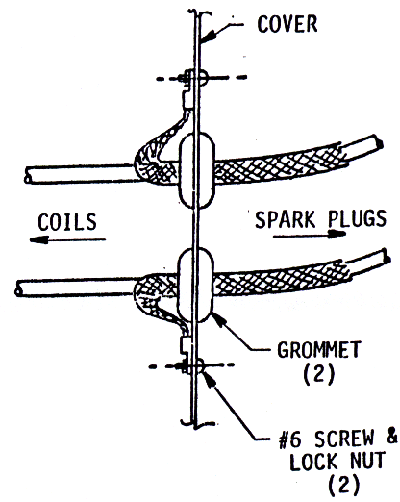|
This information is provided as a guide for shielding your aircraft for the successful installation and operation of any AM radio system.
Engines used in ultralight aircraft are traditionally two stroke 20 to 75 horsepower units which use a magneto to generate electric current in order to produce a high energy spark for ignition. This type of ignition is reliable and effective and used on most aircraft
utilizing gasoline-fueled engines.
However, this set-up interferes with radio broadcasting. The problem with high energy spark ignition is its inherent characteristic of broadcasting a complete spectrum of radio signals in the form of static, especially on the AM band.
Years ago, when aircraft communication was initiated, the only radios available were of the amplitude modulation (AM type). Since that time, no major changes in aircraft radio design have been made.
Engine ignition noise (static) has always been a problem for aircraft communication systems, and it
remains so today. With the advent of the all-metal airplane, the problem has been reduced for a number of reasons. Most important of these is the complete shrouding of the engine in a metal cowl with a metal firewall between the engine
and radio installation.
But even shrouding the engine in metal does not remove all of the interference. By shielding the actual source, most unwanted signals can be suppressed. High tension wires should be shielded with wire braid, spark plugs jacketed in metal, and the magnetos housed in a metal case with all of these grounded to the engine block.
As a final measure, the antenna for the radio
should be placed some distance from the engine and connected to the radio with a shielded coaxial cable which has its outer braid
grounded at j each end.
AM communication equipment installed in an ultralight aircraft will operate satisfactorily if properly installed and protected from the high energy ignition system.
The following steps should be taken in order to assure clear communication to and from your ultralight aircraft:
1.
Obtain and install resistor spark plugs of the same type you are now using. May be located at your auto parts
store.
2. Install metal spark plug covers. (Covers can be purchased from Parts Unlimited - 204 West Lawton Street - Edgerton, Wisconsin 53534)
3. Shield your spark plug wires with wire braid. The end closest to the spark plug end should be grounded to the metal plug cover. (The braid can be obtained from your local electronic supply store).
4. Fabricate a sheet metal cover (.020 aluminum is sufficient) to fit over the spark coil or coils. This cover should fit tight to the engine block and should be grounded there. All wires should emerge through rubber' grommets set in the cover. The wire braid should be grounded inside the cover. (See Figure 1 and 2).
5. Last and probably most important, fabricate a bracket attaching your antenna to the wing tip, jack post, or vertical fin of your aircraft.
6. Install the antenna on the bracket and connect it to the radio transceiver' using a coaxial cable. ·(Both the antenna and cable may be purchased at your nearest aircraft radio shop.
Secure the coaxial cable from the antenna to the radio using duct tape or similar material. The coax
should be secured to a structural member every 18 to 24 inches.
Remember, shielding an ignition system for radio communications is more an art than a science. What may work in some cases, may not in others'. This news
letter, is intended to be a guide to you the user. You may find that you'll have satisfactory results using any one or a
combination of steps shown here.
|




